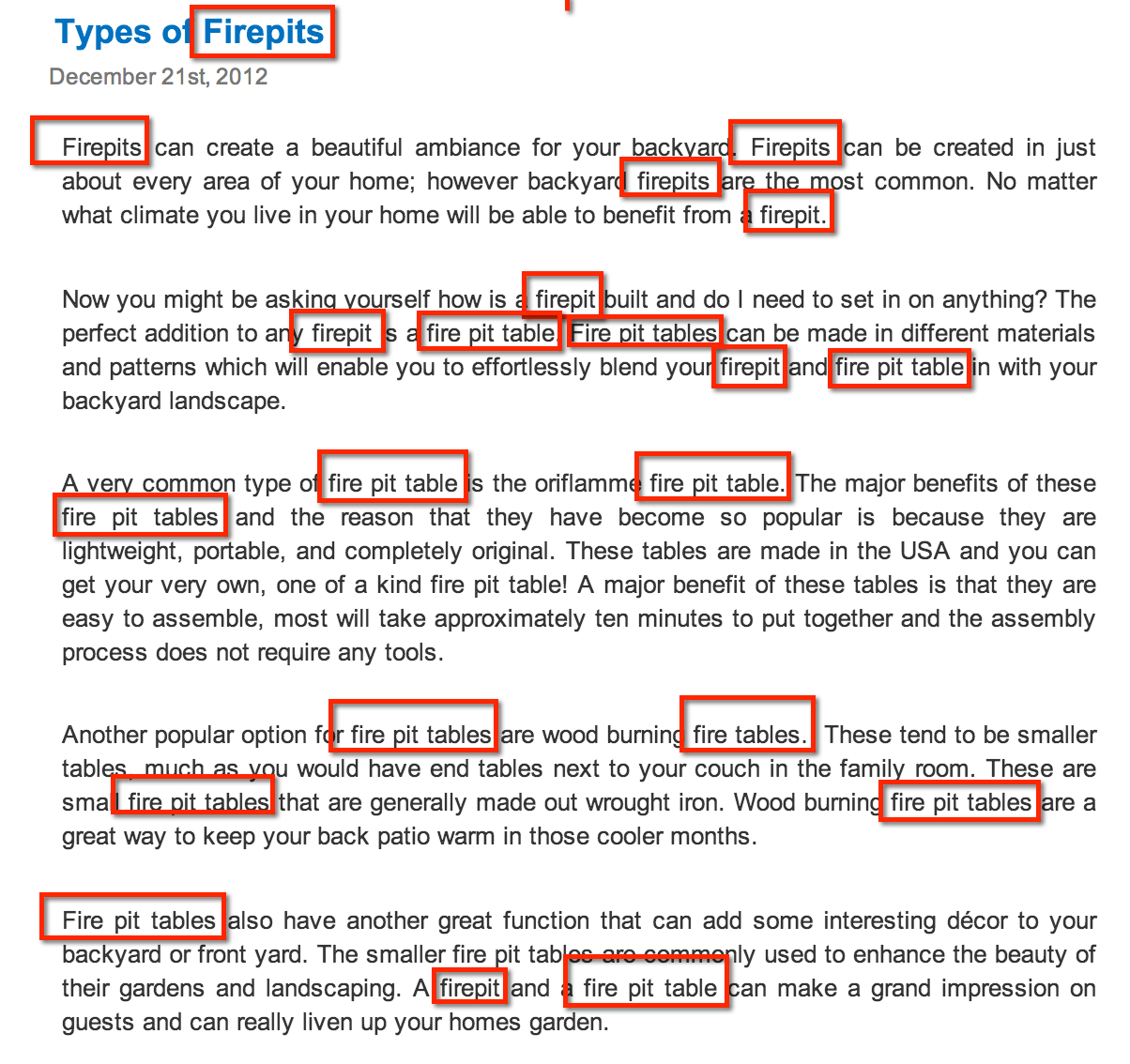
It is important to use the keywords you want to rank for in your subtitles and paragraph texts, but be careful not to “keyword stuff” as that will hurt your rankings rather than help. A good example of doing it properly is the screenshot in the above image from McRae Bail Bonds‘ a local San Antonio, Texas business. Click the above link to go to their site to read.
Keyword stuffing means overloading a website’s text with keywords so that it detracts from the message because the words don’t fit naturally into the content. When people do this, it is obvious to the reader that they are just adding words to the text to add them and that they are not needed.
In the above image, the subtitles might be a bit loaded with keywords, which is how you want them to be within reason. But you will notice that the paragraph text only has keywords that fit in the content naturally so that they fit. You want your English professor to be happy with you as well.
In this article, we will talk about how to write text that includes the keywords you want without keyword stuffing. See also my article “How To Optimize Content For Local SEO!“.
Example Of Keyword Stuffing
Keyword stuffing is when people stick an extreme amount of keywords in paragraph text over and over again. They either use the same keyword or the same few, so often that it wrecks the reader’s reading experience. Text with keyword stuffing is not enjoyable for the reader to read.
The above image shows an excellent example of keyword stuffing. The word “firepit,” or variations of it, is repeated over and over again to the point of annoyance. A good rule of thumb is that if it damages the reader’s experience, it is keyword stuffing. And you need a natural mix of related keywords rather than the same word over and over.
Types Of Keyword Stuffing
There are two basic types of keyword stuffing that people do. The first I will call “visible keyword stuffing,” and the second (you guessed it) I will call “invisible keyword stuffing.”
Visible Keyword Stuffing
Visible keyword stuffing is like we saw in the above image. It is when people use one or several keywords over and over excessively and unnaturally to the point of damaging the readers’ experience.
Invisible Keyword Stuffing
Google hates this worse than visible keyword stuffing because it is done to be deceptive. Invisible keyword stuffing is when extra text is put on the page that the reader can’t see, such as white text on a white background stuffed with keywords.
Often, with this method, the author will just list the same keyword over and over again in a list fashion. This method doesn’t hurt the user’s reading experience because only the search engines see the keyword stuffing. This method is rarely used because search engines can detect and penalize the website for using it.
Why Do People Keyword Stuff?

In the old days, a decade ago or longer, keyword stuffing actually worked. You just loaded your article with the word you wanted to rank for, and your page would show up first in Google for that keyword.
Thank heavens, that is no longer the case! It made for really poor, hard-to-read content. Fortunately, search engines like Google work hard (in most cases) to show us the content we are searching for, and we have learned how to spot content with keyword stuffing and leave them out of their search results.
Nowadays, the reason people keyword stuff is still the same: they are trying to make sure the page ranks for that keyword. Their methods are either outdated, and they have not yet heard that keyword stuffing will now hurt your rankings, or someone gave them some bad advice.
I have found when I looking to hire freelance writers for various projects, if they advertise that they “know how to optimize” their writing “for SEO”, I need to steer clear because they will keyword stuff, especially if they are from a foreign country. You want keywords in there, but they have to fit in naturally.
How To Write Good SEO Content Without Keyword Stuffing

The above image is an example of well-written SEO text content. You will notice there are a lot of plumbing services keywords in there, all things they would want to show up under if someone searched for it.
However, even though there are a ton of them, the keywords help the reader’s experience not hurt it because it all flows naturally. It is anything but redundant or repetitive.
Notice also that the paragraph fits specifically in the topic of the subtitle above it. The paragraph is exactly about what the subtitle says it will be about. There are now off-topic sidetracks or detours.
When teaching new writers how to write this kind of keyword-rich, naturally flowing SEO text, I teach them just to write very specifically. If you say what you are trying to say but just be very specific about it, you will naturally fit in all the keywords you want in there without really trying.
Final Thoughts
The only reason people ever wanted to keyword stuff was to cut corners. They wanted to jump to the top of the rankings without having to put in the work to write the best content possible. Don’t be that way.
Search engines want to show the best content, so they have improved their algorithms to catch and weed out garbage keyword-stuffing type content. Build the best, most helpful websites with the most engaging and helpful content, and you don’t need cheap parlor tricks to try to game the system.
Thank you for reading this article all the way to the end! I hope that you learned something and got some benefit out of it! If you did, please share this article on your social media! That will help us grow this channel more than anything! Thank you.

